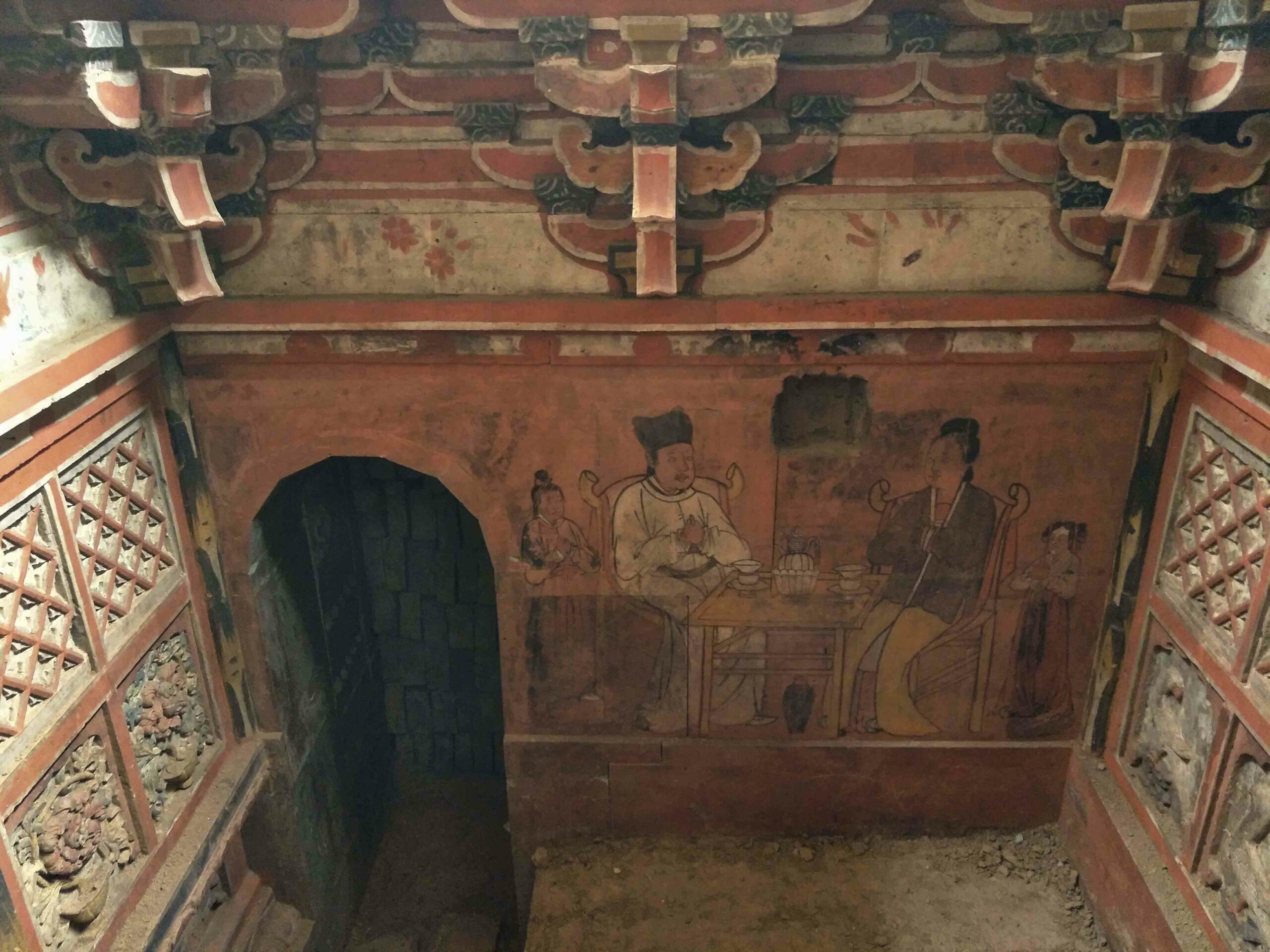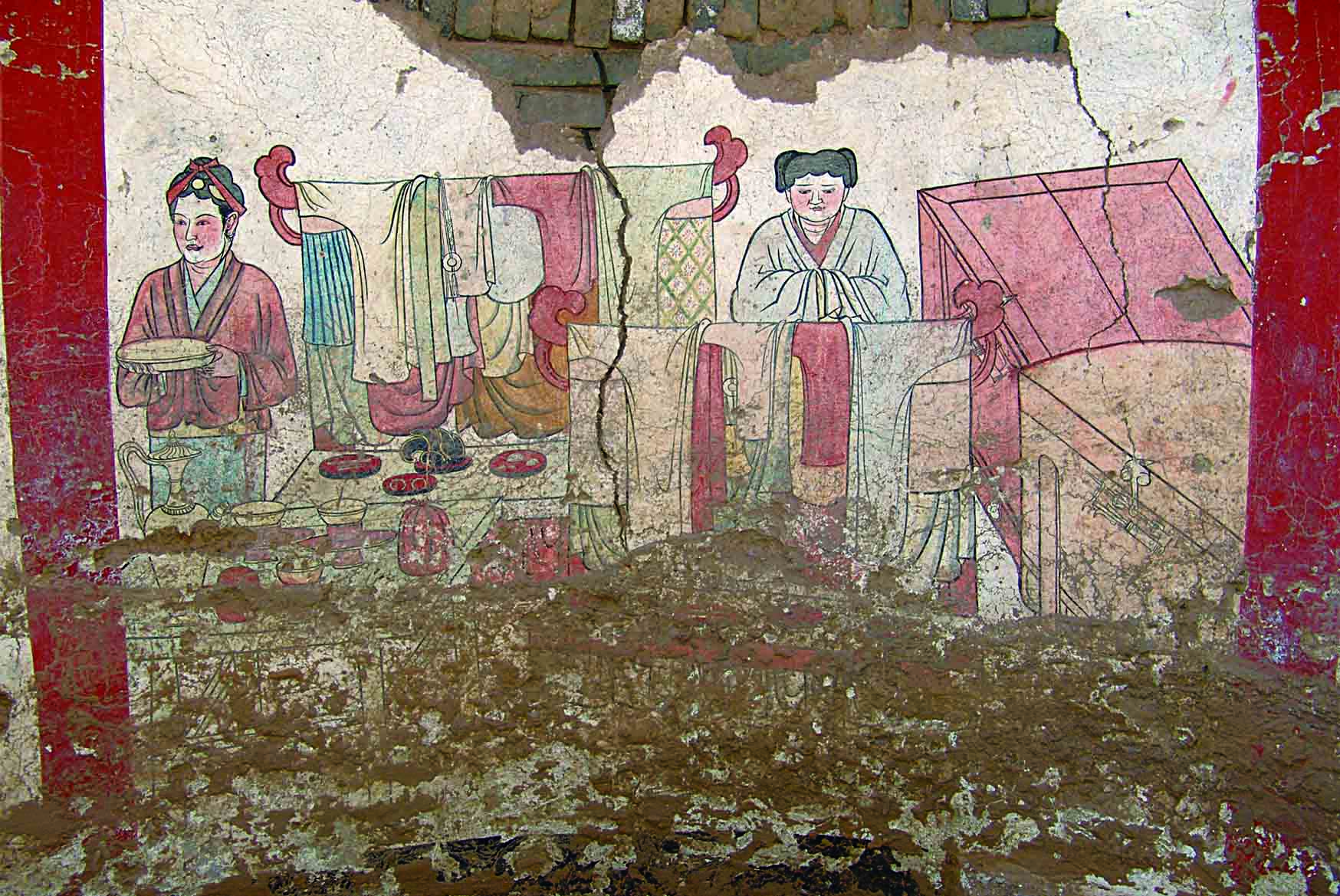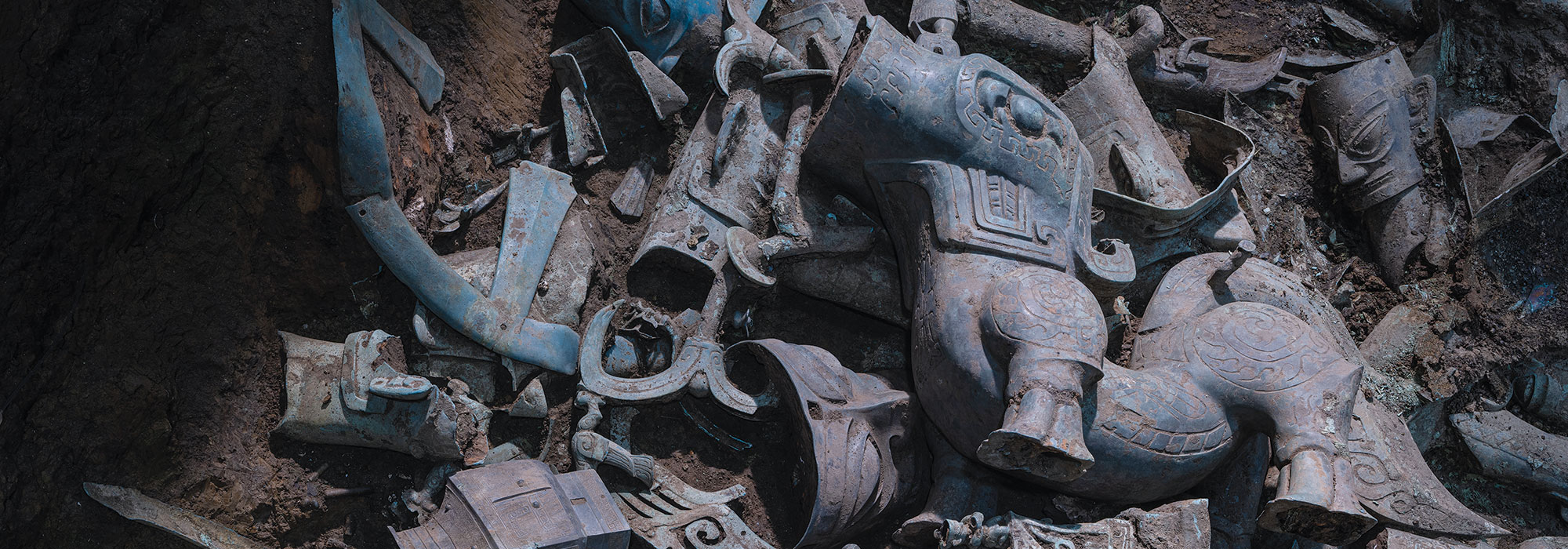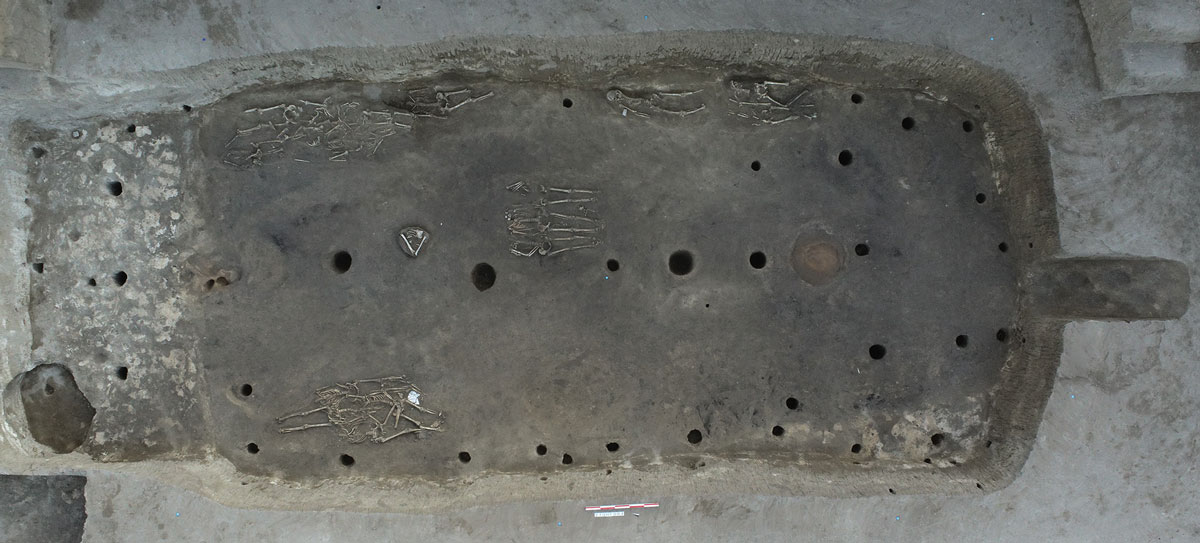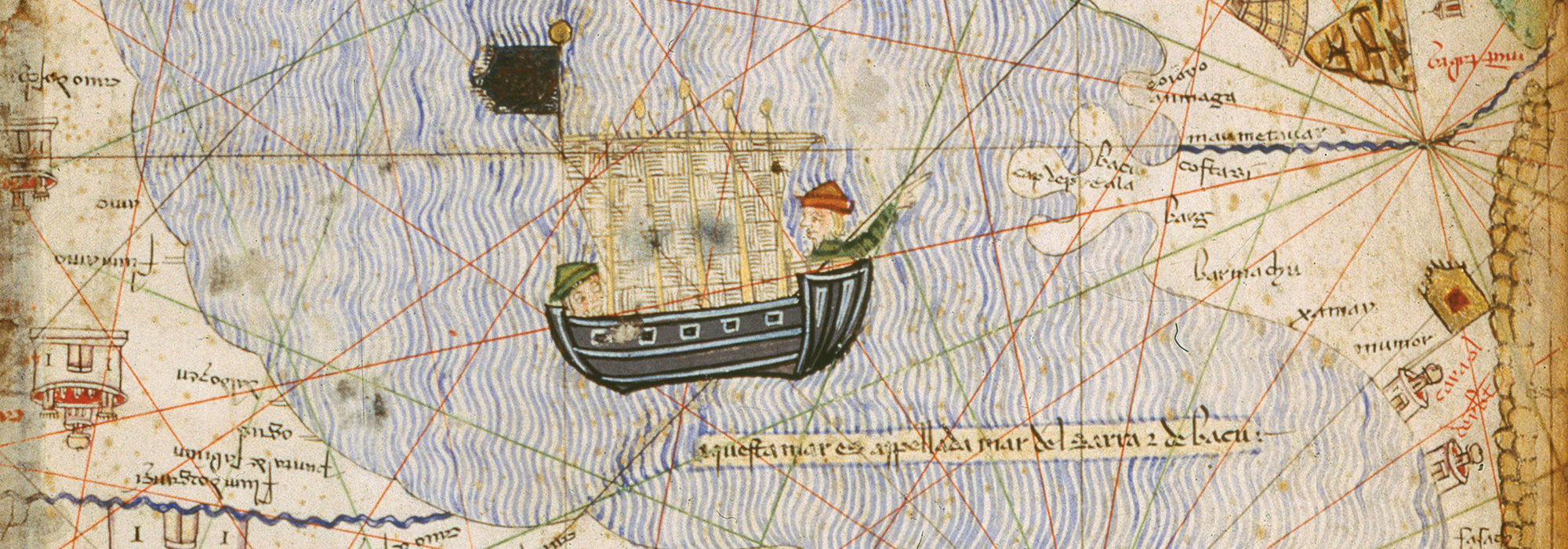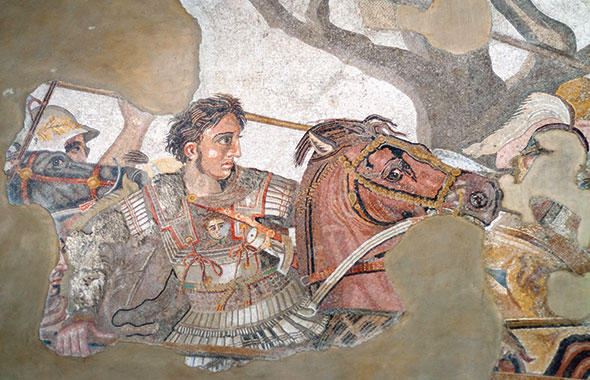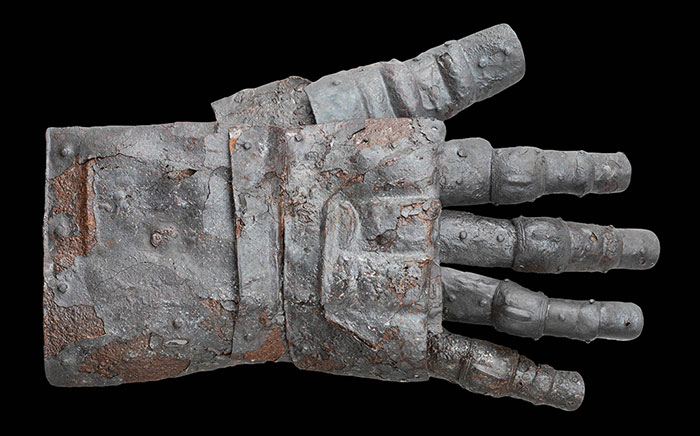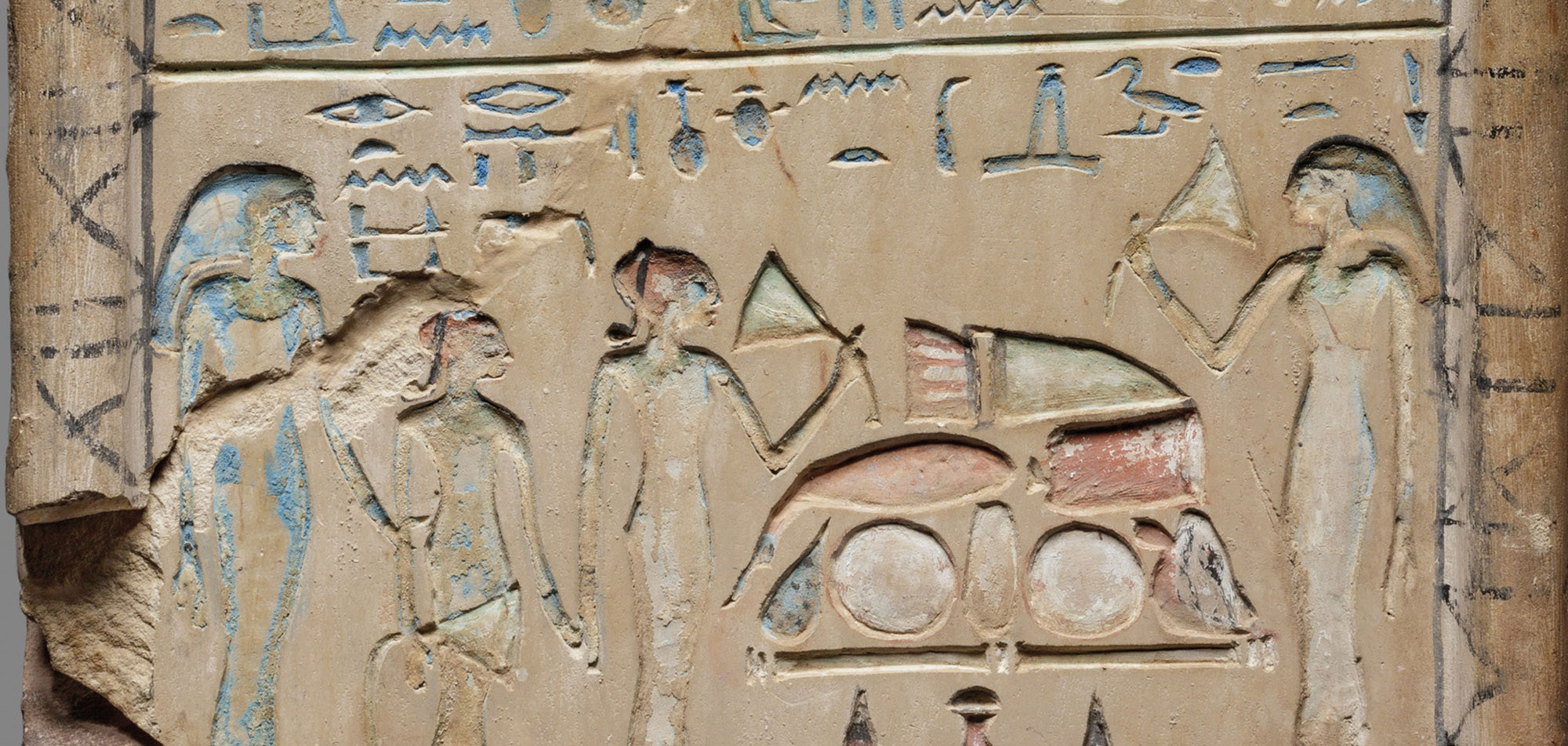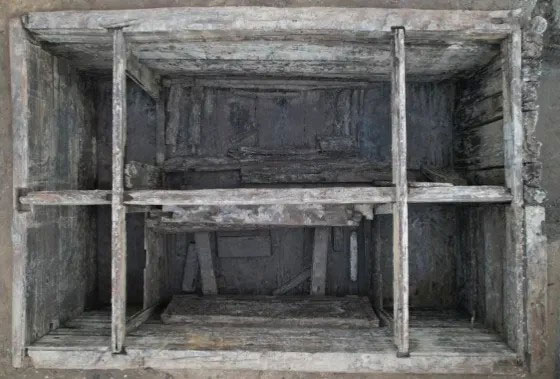
RIZHAO, CHINA—The Miami Herald reports that three tombs have been discovered inside a partially damaged burial mound near the coast of eastern China by researchers from the Chinese Academy of Social Sciences. Each of the tombs, which have been dated to the Han Dynasty (206 B.C.–A.D. 220), has a sloping passageway to its entrance and held two burials. Two of the structures carried the surname Huan, suggesting that the structures belonged to the same family. And while two of the tombs had been looted in antiquity and only contained wooden coffins, the third remained intact. Its main chamber was made up of two rooms connected with miniature wooden windows and doors and likely held the remains of a married couple. More than 70 artifacts, including an iron sword, bronze mirrors, and different types of pottery, were recovered from the chambers. A rare coffin carriage, which would have been used to transport a coffin, was also found in the intact tomb. To read about bronze mirrors found in Han Dynasty tombs, go to "Mirror, Mirror."


